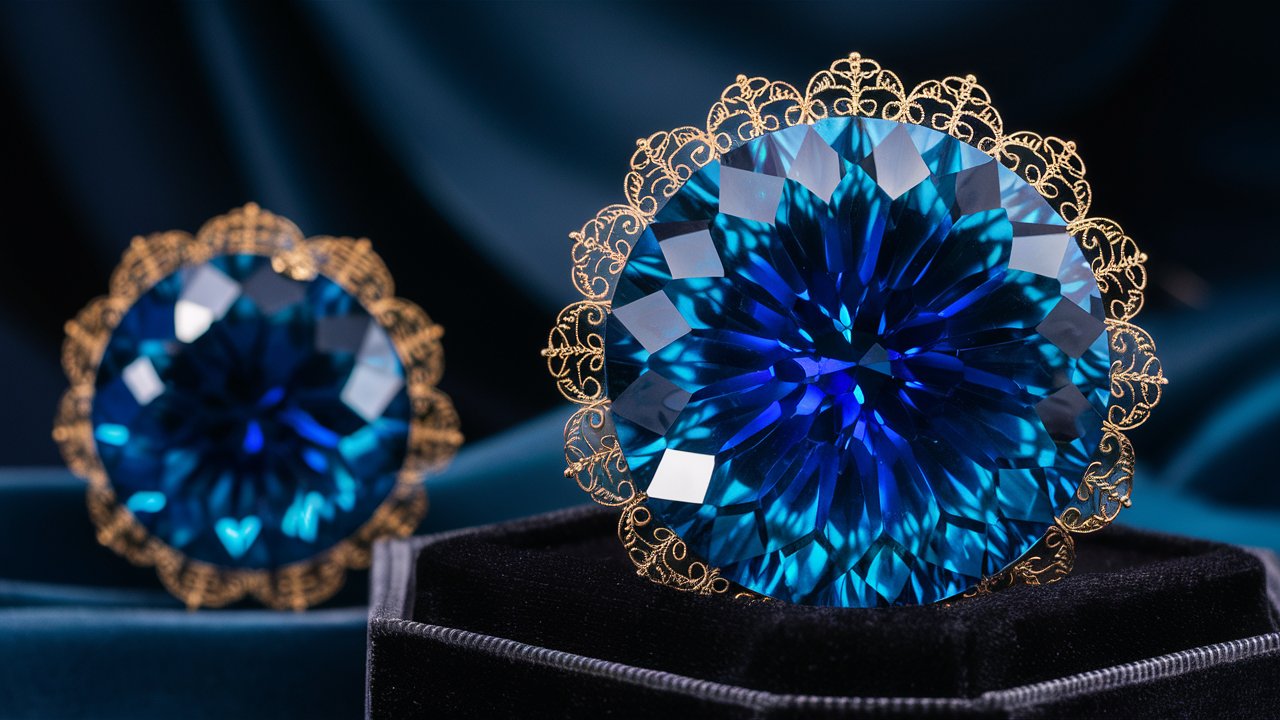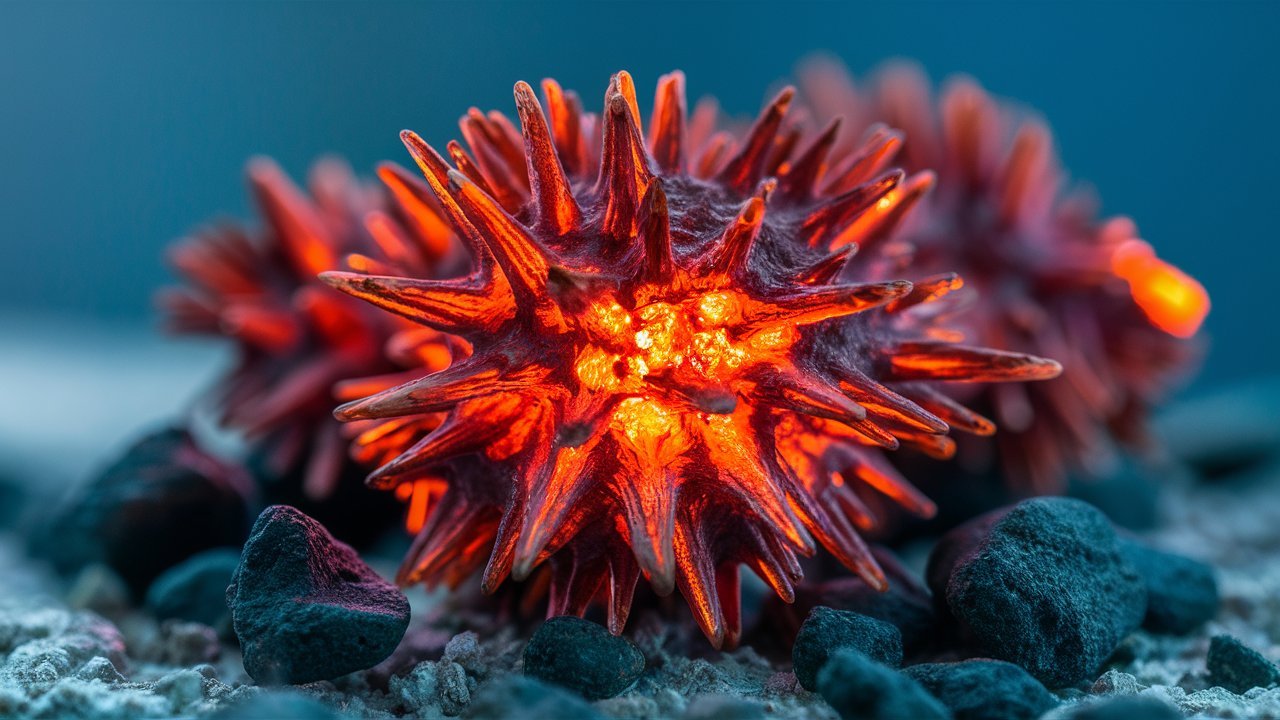
Aerinite is a rare blue mineral that has fascinated geologists and collectors alike. Found primarily in Spain, this mineral's striking color and unique properties make it a subject of intrigue. But what exactly is aerinite? It's a complex silicate mineral that often forms in fibrous or massive habits. Known for its vibrant blue hue, aerinite has been used historically as a pigment in art. Its name comes from the Greek word "aerinos," meaning "atmospheric," reflecting its sky-blue color. Why should you care about aerinite? Understanding this mineral can offer insights into geological processes and historical uses in art. Whether you're a budding geologist, an art enthusiast, or just curious, these 25 facts about aerinite will broaden your knowledge and perhaps even spark a new interest.
What is Aerinite?
Aerinite is a rare blue mineral that has fascinated scientists and collectors alike. Found primarily in Spain, this mineral has a unique composition and history. Let's dive into some intriguing facts about aerinite.
-
Aerinite's Name Origin: The name "aerinite" comes from the Greek word "aerinos," meaning "sky blue." This reflects its striking blue color.
-
Color Variations: While typically blue, aerinite can also appear in shades of green and purple, depending on its chemical composition.
-
Chemical Composition: Aerinite is a complex silicate mineral containing calcium, iron, aluminum, and magnesium. Its formula is often written as Ca4(Fe3+,Al,Fe2+)10Si12O35(OH)12·12H2O.
-
Crystal Structure: This mineral has a fibrous crystal structure, which contributes to its unique appearance and texture.
-
Primary Locations: Aerinite is predominantly found in the Pyrenees Mountains of Spain, particularly in the provinces of Huesca and Lleida.
-
Historical Uses: In medieval times, aerinite was used as a pigment in frescoes and paintings due to its vibrant color.
-
Modern Uses: Today, aerinite is mainly a collector's item and is studied for its unique properties rather than used in commercial applications.
Aerinite in Nature
Aerinite's natural occurrence and formation are as fascinating as its appearance. Here are some facts about where and how it forms.
-
Formation Conditions: Aerinite forms in low-temperature hydrothermal environments, often in association with other minerals like quartz and calcite.
-
Associated Minerals: Commonly found alongside minerals such as quartz, calcite, and dolomite, aerinite often forms in veins and cavities within host rocks.
-
Geological Significance: The presence of aerinite can indicate specific geological conditions, making it valuable for geological studies.
-
Rarity: Aerinite is considered a rare mineral, with few significant deposits known worldwide.
-
Mining Challenges: Extracting aerinite can be challenging due to its fibrous nature and the remote locations of its deposits.
Aerinite's Unique Properties
Aerinite's properties make it stand out among other minerals. Let's explore some of these unique characteristics.
-
Hardness: On the Mohs scale, aerinite has a hardness of 3 to 4, making it relatively soft compared to other minerals.
-
Luster: Aerinite exhibits a vitreous to silky luster, adding to its visual appeal.
-
Transparency: This mineral is typically translucent to opaque, with some specimens showing slight transparency.
-
Streak: When rubbed on a porcelain plate, aerinite leaves a light blue streak, which helps in its identification.
-
Specific Gravity: Aerinite has a specific gravity of around 2.5 to 2.7, which is relatively low for a mineral.
Aerinite in Culture and Science
Aerinite has left its mark not just in nature but also in culture and scientific research. Here are some interesting cultural and scientific facts.
-
Cultural Significance: In some cultures, aerinite was believed to have protective properties and was used in amulets and talismans.
-
Scientific Research: Scientists study aerinite to understand its formation processes and its potential applications in various fields.
-
Pigment Analysis: Art historians and chemists analyze aerinite pigments in ancient artworks to learn about historical painting techniques.
-
Spectroscopy Studies: Researchers use spectroscopy to study aerinite's unique optical properties and its interaction with light.
-
Educational Value: Aerinite is often used in educational settings to teach students about mineralogy and geology.
Fun Facts About Aerinite
Let's wrap up with some fun and lesser-known facts about this captivating mineral.
-
Color Change: Some aerinite specimens can change color slightly when exposed to different lighting conditions.
-
Collector's Item: Due to its rarity and striking appearance, aerinite is highly sought after by mineral collectors.
-
Museum Displays: Many natural history museums around the world feature aerinite in their mineral collections, showcasing its beauty and rarity.
Aerinite's Fascinating World
Aerinite, a rare blue mineral, holds a unique place in history and science. Its striking color made it a prized pigment in medieval art, especially in Spanish frescoes. Beyond its beauty, aerinite's composition offers insights into geological processes. Found mainly in the Pyrenees, this mineral's rarity adds to its allure.
Scientists study aerinite to understand its formation and potential applications. Its stability under various conditions makes it a subject of interest for material science. While not widely known, aerinite's contributions to art and science are significant.
Whether you're an art lover or a science enthusiast, aerinite's story is captivating. From medieval masterpieces to modern research, this mineral continues to inspire and inform. So next time you see a stunning blue in ancient art, remember the fascinating world of aerinite.
Was this page helpful?
Our commitment to delivering trustworthy and engaging content is at the heart of what we do. Each fact on our site is contributed by real users like you, bringing a wealth of diverse insights and information. To ensure the highest standards of accuracy and reliability, our dedicated editors meticulously review each submission. This process guarantees that the facts we share are not only fascinating but also credible. Trust in our commitment to quality and authenticity as you explore and learn with us.


